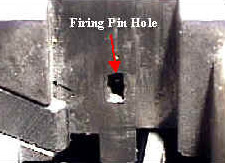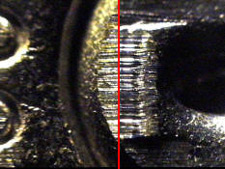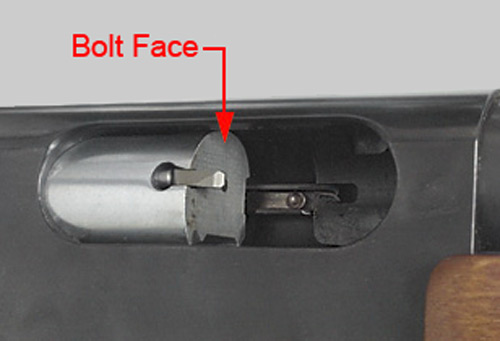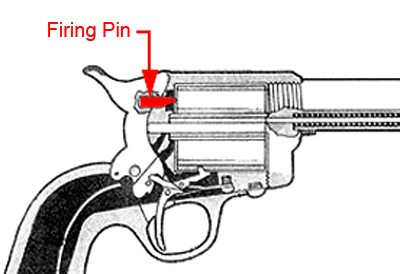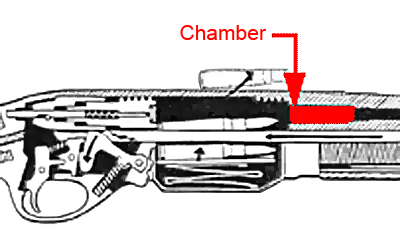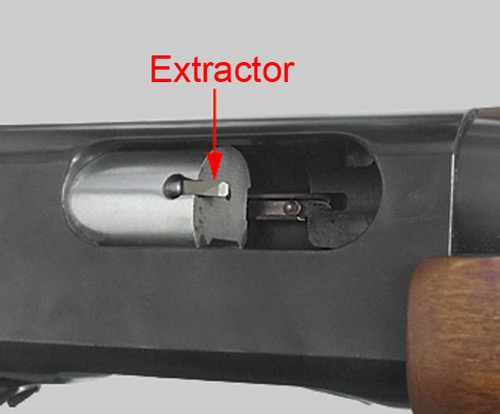Home | Glossary | Resources | Help | Contact Us | Course Map
Archival Notice
This is an archive page that is no longer being updated. It may contain outdated information and links may no longer function as originally intended.
Identification
Along with the identification of fired bullets, the identification of fired cartridge cases and shotshell cases comprise two key aspects of firearms examination. Fired cartridge cases are frequently more useful than fired bullets when linking shooting incidents because they are usually found in greater quantities at crime scenes. They may also bear more microscopic marks of value than recovered bullets, which are subject to mutilation, deformation, and fragmentation.
The identification of fired cartridge cases and shotshell cases dates to 1925 when a comparison microscope was modified to compare the unique microscopic marks produced by firearms on the surfaces of ammunition. This was accomplished by the Bureau of Forensic Ballistics, a private group in New York City led by Calvin H. Goddard.
Evidentiary Value
Based on the unique reproducible striations and/or impressions produced during the normal functioning of a firearm, it is possible to identify
- cartridge cases and shotshell cases as having been fired in a particular firearm, based on firing pin impressions, breech face marks, and chamber marks,
- fired and unfired cartridge cases and shotshell cases as having been cycled through the action of a particular firearm, based on extractor and ejector marks as well as other mechanism marks.
Although the identification of a cartridge case or shotshell case as having been fired in a particular firearm carries more weight as evidence, the identification of these items as having been at least cycled through the action of a firearm is still significant and may have probative value.
Individual Characteristics
The examination and identification of fired and unfired cartridge cases/shotshell cases are based on the following principles:
- The various parts of the operating mechanism of firearms (firing pin, breech face, chamber, extractor, ejector, and other areas) can bear unique microscopic characteristics as a result of manufacturing processes, use, and abuse.
- These characteristics may mark the surfaces of fired and unfired cartridge cases/shotshell cases with striated marks or impressions as they are fired in or cycled through the firearm.
- These individual characteristics may be reproducible and may be uniquely identifiable with a particular firearm.
These principles and the use of comparison microscopy combine to form the conceptual and physical foundation for firearm identification.
Additional Online Courses
- What Every First Responding Officer Should Know About DNA Evidence
- Collecting DNA Evidence at Property Crime Scenes
- DNA – A Prosecutor’s Practice Notebook
- Crime Scene and DNA Basics
- Laboratory Safety Programs
- DNA Amplification
- Population Genetics and Statistics
- Non-STR DNA Markers: SNPs, Y-STRs, LCN and mtDNA
- Firearms Examiner Training
- Forensic DNA Education for Law Enforcement Decisionmakers
- What Every Investigator and Evidence Technician Should Know About DNA Evidence
- Principles of Forensic DNA for Officers of the Court
- Law 101: Legal Guide for the Forensic Expert
- Laboratory Orientation and Testing of Body Fluids and Tissues
- DNA Extraction and Quantitation
- STR Data Analysis and Interpretation
- Communication Skills, Report Writing, and Courtroom Testimony
- Español for Law Enforcement
- Amplified DNA Product Separation for Forensic Analysts


